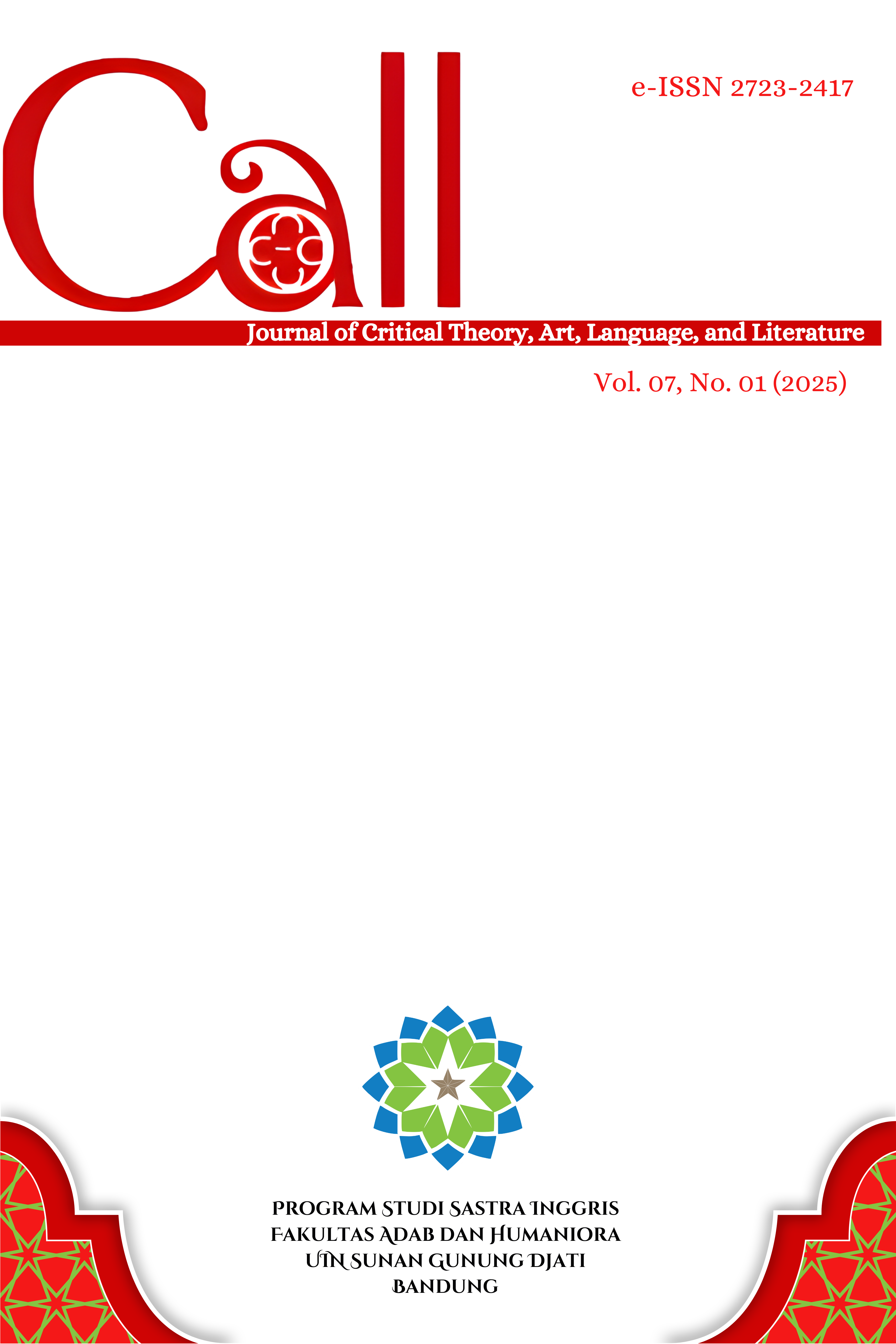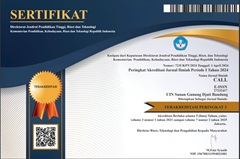A STUDY OF ENGLISH FOOD AND BEVERAGE LEXICONS AT RESTAURANTS AND CAFES IN KUDUS CITY
DOI:
https://doi.org/10.15575/call.v7i1.38531Keywords:
Lexicons, Culinary, word formation, referenceAbstract
This research aims to analyze lexicon choices, word formation, and reference in English culinary lexicon on food and beverage menus in restaurants and cafes in Kudus City. A descriptive qualitative method was employed, collecting data from 25 establishments, Focusing on lexical choices, word formation processes, and references. Semantic theory and morphological analysis were used to interpret the data. The results show that the lexicon contained in the beverage menu is more diverse than the food menu, as beverage variants are used more on menus than food. In addition, compounding is the dominant word formation process found in the menu. The findings illustrate the influence of local culture in the choice of words used on food and beverage menus, as well as showing creative trends in word formation through compounding. This research contributes to the understanding of how the English culinary lexicon is adapted in local cultural contexts and how word formation processes reflect communication needs in the culinary industry, so that people can mention menu names without changing the pronunciation.
References
Bauer, L. (1983). English Word-Formation. Cambridge University Press
Bauer, L. (2021). Compounding and Morphology. Cambridge University Press.
Bustan, Sri Rezeki, et al. (2024). Language Acquisition: The Efforts of Afghan Refugees in Communicating with Local People. CALL Journal, 6(1), 40-48.
Creswell, J. W. (2014). Research Design: Qualitative, Quantitative, and Mixed Methods Approaches. SAGE Publications
Goldstein, E. B. (2014). Sensation and Perception. Cengage Learning.
Hendra, H., Wahyuningputri, R. A., Putra, A. N., & Levyta, F. (2021). The lexicon of Majapahit culinary at Trowulan in the globalization era. Journal of tourism, culinary and entrepreneurship (jtce).
Hurford, J. R., Heasley, B., & Smith, M. B. (2007). Semantics: A Coursebook. Cambridge University Press.
Li, S. (2018). A corpus-based multimodal approach to the translation of restaurant menus. Perspectives, 27(1), 1–19.
Mathiot, M. (1979). Ethnolinguistics: Boas, Sapir, and Whorf revisited. Contributions to the Sociology of Language. De Gruyter Mouton.
Nation, I. S. P. (2013). Learning Vocabulary in Another Language. Cambridge University Press.
Ogden, C. K., & Sandulescu, C. G. (2013). Theoretical Backup One Volume Fifty-Five The Meaning of Meaning. Sandulescu Online
Setiawan, S., & Susanti, A. (2021). The “Spooky Menu” of Indonesian Culinary: Morpho-Pragmatic Perspectives. Turkish Journal of Computer and Mathematics Education, 12 (9), 1042–1052.
Snyder, William (2016) Compound Word Formation. In Jeffrey Lidz, William Snyder, and Joseph Pater (eds.) The Oxford Handbook of Developmental Linguistics. Oxford: Oxford University Press.
Yulianti, A. I., Septiana, D., Fajrin, H., Riset, R. 3 B., Nasional, D. I., & Id, A. I. Y. G. (2022). The Influences of English on Indonesian Register of Culinary Pengaruh Bahasa Inggris terhadap Register Kuliner Indonesia. 4535, 175–182.
Zheng,H. (2024). Vocabulary Knowledge and Acquisition. Advances in Humanities Research, 5 ,32-36.
Downloads
Published
Issue
Section
Citation Check
License
Copyright (c) 2025 Syahrul Fahmi, Ahdi Riyono, Slamet Utomo

This work is licensed under a Creative Commons Attribution-ShareAlike 4.0 International License.
Authors who publish in CALL agree to the following terms:
- Authors retain copyright and grant the journal right of first publication with the work simultaneously licensed under Attribution-ShareAlike 4.0 International (CC BY-SA 4.0) License that allows others to share the work with an acknowledgment of the work's authorship and initial publication in this journal.
- Authors are able to enter into separate, additional contractual arrangements for the non-exclusive distribution of the journal's published version of the work (e.g., post it to an institutional repository or publish it in a book), with an acknowledgment of its initial publication in this journal.
- Authors are permitted and encouraged to post their work online (e.g., in institutional repositories or on their website) prior to and during the submission process, as it can lead to productive exchanges, as well as earlier and greater citation of published work (See The Effect of Open Access).




